
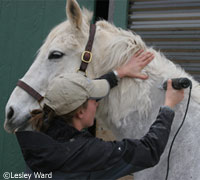 Use the right clippers for the job: full-size clippers have the powerful motor required for big jobs like body clipping.
Use the right clippers for the job: full-size clippers have the powerful motor required for big jobs like body clipping.
- Have two pairs of sharpened blades handy before you start. One set of body clipper blades can only do two full clips before starting to dull. Spare blades are handy in case of overheating or jams.
- The time you spend preparing your horse will pay off in the end. Give him a thorough bath and allow him to dry out completely in a stall covered in a cooler so he won’t pick up more dirt.
- Spritz your horse with a silicone coat spray before you begin so the clippers will easily glide through the hair.
- Clean the running clippers periodically in a bucket or disposable container of blade wash. Follow each wash with a liberal coating of oil (either spray-on or drops will work).
- Use cooling spray to keep your clippers from overheating and burning your horse.
- Hold the clippers flat against your horse’s skin and glide them against the direction of hair growth.
- When attempting a partial cut, such as a trace clip, first create the outline you want using chalk. Having a guideline will help prevent you from trimming one side higher than the other.
- If leaving the legs unclipped, trim the hair on an angle along your horse’s natural musculature when reaching your stopping point at the top of the leg for a more natural look.
- If you clip over the top of your horse’s hindquarters, create an upside down “V” shape where the dock of the tail meets the body for a seamless appearance.
- For a horse that is particularly sensitive around his flanks, you can switch to a smaller set of clippers, which won’t cause as much vibration as larger ones.
- You can also use a smaller set of clippers when clipping your horse’s head. Many people opt to leave the head unclipped, as it’s difficult, time-consuming, and largely unnecessary except for aesthetics.
- Even if doing a full-body clip, some riders prefer to leave a rectangular patch of hair where the saddle will sit for a bit of extra cushioning.
- Wear a windbreaker over your clothing (and no fleece!) if you hope to ever wear it again. Horse hair really has a way of working itself into fabric and staying there! Many professional grooms wear surgical masks to cover their nose and mouth from flying hairs as well. It’s best to put your own hair back into a tight ponytail or under a cap.
- Be prepared to keep your newly shaved horse appropriately blanketed for the weather conditions. If you can’t commit to blanketing, it’s best to leave your horse with his natural protection.

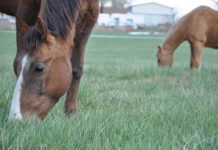
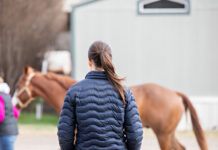
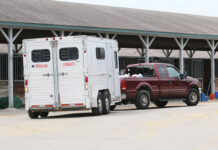

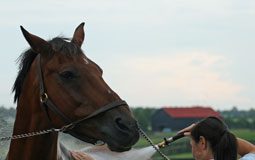

I think this is a very good article on how to clip your horse for the winter
I can’t wait to clip my minis. Last time I got some black and brown dappling on my solid bay–very odd.